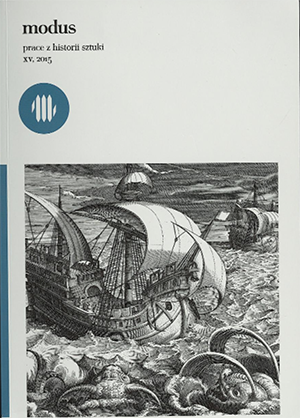Polityka w architekturze Polski, Czech i Węgier od końca IX do końca XI wieku
Politics in the Architecture of Poland, Bohemia and Hungary from the End of the Ninth to the End of the Eleventh Century
Author(s): Marta GraczyńskaSubject(s): Cultural history, Architecture, Local History / Microhistory, Political history, Middle Ages, 6th to 12th Centuries, Sociology of Art
Published by: Wydawnictwo Uniwersytetu Jagiellońskiego
Keywords: Poland;Hungary;Czech Republic;architecture and public history;architecture archaeology; architecture
Summary/Abstract: the domains of the Piasts, Premyslids and Arpads (as the territories of future Poland, Bohemia and Hungary should be correctly called), one of the most important aspects of retaining the power by the ruling dukes was the possibly most lavishostentation of their authority. Such manifestations were also indispensable elements of transformations that the dukes decided to introduce, and which they underscored by undertaking certain legal initiatives. It was on the basis of these initiatives that they transformed their realms and introduced them into the orbit of Christianity. Among those decisions, one that was most heavily burdened with consequences was that of conversion.This act not only changed the political situation of a realm, but also significantly influenced the image of the ruler and his expected conduct. Since that moment, the duke protected and supported not only his subjects but also the brand new organism of theChurch, which he also helped to develop himself. Thus, the dukes built their positions on the basis and with the help of the clergy and the saintly intercessors. The most prominent testimony to these transformations is in the works of architecture erected by the dukes.Architectural forms, appropriate for a particular function, underscored the new status of the former heathens who strived at becoming Christian kings. This ambition materialised thanks to the support of the Church and a coronation would take place in a befitting setting of a temple, next to the relics of a spiritual leader. Thus, a work of architecture became inseparable from the world that yielded it, and reflected its cultural, social and, above all, political needs. Confronted with the scarcity of written sources related to theYounger Europe of the ninth to eleventh centuries, it is in a detailed analysis of architecture that we should search for additional information on the beginnings of statehood in the neighbouring areas
Journal: Modus. Prace z historii sztuki
- Issue Year: 2015
- Issue No: 15
- Page Range: 15-24
- Page Count: 10
- Language: Polish

